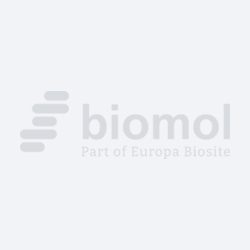Cookie-Einstellungen
Diese Website benutzt Cookies, die für den technischen Betrieb der Website erforderlich sind und stets gesetzt werden. Andere Cookies, die den Komfort bei Benutzung dieser Website erhöhen, der Direktwerbung dienen oder die Interaktion mit anderen Websites und sozialen Netzwerken vereinfachen sollen, werden nur mit Ihrer Zustimmung gesetzt.
Konfiguration
Technisch erforderlich
Diese Cookies sind für die Grundfunktionen des Shops notwendig.
"Alle Cookies ablehnen" Cookie
"Alle Cookies annehmen" Cookie
Ausgewählter Shop
CSRF-Token
Cookie-Einstellungen
FACT-Finder Tracking
Individuelle Preise
Kundenspezifisches Caching
Session
Währungswechsel
Komfortfunktionen
Diese Cookies werden genutzt um das Einkaufserlebnis noch ansprechender zu gestalten, beispielsweise für die Wiedererkennung des Besuchers.
Facebook-Seite in der rechten Blog - Sidebar anzeigen
Merkzettel
Statistik & Tracking
Endgeräteerkennung
Kauf- und Surfverhalten mit Google Tag Manager
Partnerprogramm

Bei Fragen nutzen Sie gerne unser Kontaktformular.
Bestellen Sie auch per E-Mail: info@biomol.com
Größere Menge gewünscht? Bulk-Anfrage
Bestellen Sie auch per E-Mail: info@biomol.com
Größere Menge gewünscht? Bulk-Anfrage
The protein encoded by this gene forms a tetrameric cation channel that is permeable to calcium,... mehr
Produktinformationen "Human TRPM2 full length protein-synthetic nanodisc"
The protein encoded by this gene forms a tetrameric cation channel that is permeable to calcium, sodium, and potassium and is regulated by free intracellular ADP-ribose. The encoded protein is activated by oxidative stress and confers susceptibility to cell death. Alternative splicing results in multiple transcript variants encoding distinct protein isoforms. Additional transcript variants of this gene have been described, but their full-length nature is not known. [provided by RefSeq, Feb 2016]. Human TRPM2 full length protein-synthetic nanodisc. Protein function: [Isoform 1]: Nonselective, voltage-independent cation channel that mediates Na(+) and Ca(2+) influx, leading to increased cytoplasmic Ca(2+) levels (PubMed:11960981, PubMed:12594222, PubMed:11385575, PubMed:11509734, PubMed:11804595, PubMed:15561722, PubMed:16601673, PubMed:19171771, PubMed:20660597, PubMed:25620041, PubMed:27383051, PubMed:27068538, PubMed:28775320, PubMed:29745897, PubMed:30467180). Functions as ligand-gated ion channel (PubMed:19171771, PubMed:25620041, PubMed:28775320, PubMed:30467180). Binding of ADP- ribose to the cytoplasmic Nudix domain causes a conformation change, the channel is primed but still requires Ca(2+) binding to trigger channel opening (PubMed:19171771, PubMed:25620041, PubMed:28775320, PubMed:29745897, PubMed:30467180). Extracellular calcium passes through the channel and increases channel activity (PubMed:19171771). Contributes to Ca(2+) release from intracellular stores in response to ADP-ribose (PubMed:19454650). Plays a role in numerous processes that involve signaling via intracellular Ca(2+) levels (Probable). Besides, mediates the release of lysosomal Zn(2+) stores in response to reactive oxygen species, leading to increased cytosolic Zn(2+) levels (PubMed:25562606, PubMed:27068538). Activated by moderate heat (35 to 40 degrees Celsius) (PubMed:16601673). Activated by intracellular ADP- ribose, beta-NAD (NAD(+)) and similar compounds, and by oxidative stress caused by reactive oxygen or nitrogen species (PubMed:11960981, PubMed:11385575, PubMed:11509734, PubMed:11804595, PubMed:15561722, PubMed:16601673, PubMed:19171771, PubMed:25620041, PubMed:27383051, PubMed:27068538, PubMed:30467180). The precise physiological activators are under debate, the true, physiological activators may be ADP-ribose and ADP-ribose-2'-phosphate (PubMed:20650899, PubMed:25918360). Activation by ADP-ribose and beta-NAD is strongly increased by moderate heat (35 to 40 degrees Celsius) (PubMed:16601673). Likewise, reactive oxygen species lower the threshold for activation by moderate heat (37 degrees Celsius) (PubMed:22493272). Plays a role in mediating behavorial and physiological responses to moderate heat and thereby contributes to body temperature homeostasis. Plays a role in insulin secretion, a process that requires increased cytoplasmic Ca(2+) levels. Required for normal IFNG and cytokine secretion and normal innate immune immunity in response to bacterial infection. Required for normal phagocytosis and cytokine release by macrophages exposed to zymosan (in vitro). Plays a role in dendritic cell differentiation and maturation, and in dendritic cell chemotaxis via its role in regulating cytoplasmic Ca(2+) levels. Plays a role in the regulation of the reorganization of the actin cytoskeleton and filopodia formation in response to reactive oxygen species via its role in increasing cytoplasmic Ca(2+) and Zn(2+) levels (PubMed:27068538). Confers susceptibility to cell death following oxidative stress (PubMed:12594222, PubMed:25562606). [The UniProt Consortium]
| Schlagworte: | TrpC7, TRPM2, LTrpC2, LTrpC-2, Transient receptor potential channel 7, Transient receptor potential melastatin 2, Long transient receptor potential channel 2, Estrogen-responsive element-associated gene 1 protein |
| Hersteller: | DIMA |
| Hersteller-Nr: | FLP100762 |
Eigenschaften
| Anwendung: | Full length transmembrane protein, FA, ELISA, screening, immunization, cell-based assays, crystallization |
| Konjugat: | No |
| Wirt: | Human cells |
| Spezies-Reaktivität: | human |
| MW: | 171.2 kD |
| Format: | Lyophilized |
Datenbank Information
| KEGG ID : | K04977 | Passende Produkte |
| UniProt ID : | O94759 | Passende Produkte |
| Gene ID : | GeneID 7226 | Passende Produkte |
Handhabung & Sicherheit
| Lagerung: | -20°C (avoid repeat freezing and thawing cycles) |
| Versand: | +20°C (International: +20°C) |
Achtung
Nur für Forschungszwecke und Laboruntersuchungen: Nicht für die Anwendung im oder am Menschen!
Nur für Forschungszwecke und Laboruntersuchungen: Nicht für die Anwendung im oder am Menschen!
Hier kriegen Sie ein Zertifikat
Loggen Sie sich ein oder registrieren Sie sich, um Analysenzertifikate anzufordern.
Bewertungen lesen, schreiben und diskutieren... mehr
Kundenbewertungen für "Human TRPM2 full length protein-synthetic nanodisc"
Bewertung schreiben
Loggen Sie sich ein oder registrieren Sie sich, um eine Produktbewertung abzugeben.
Zuletzt angesehen

